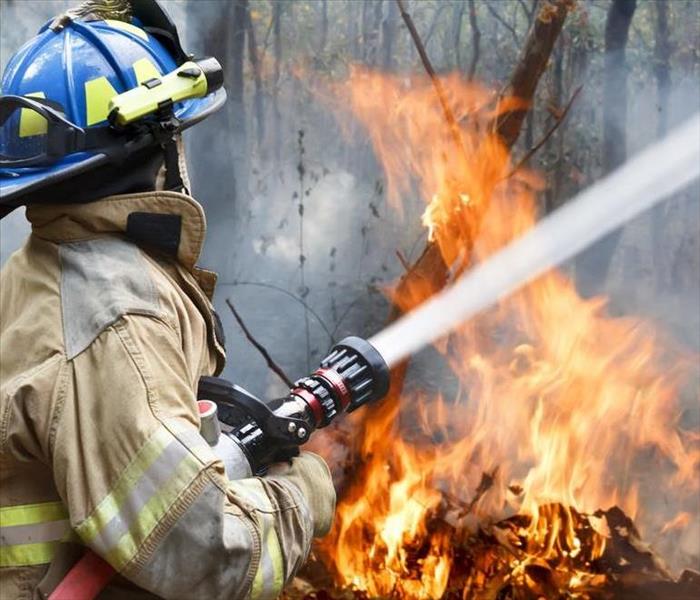How Fire Damage Causes Water Damage
5/12/2022 (Permalink)
When a fire occurs, most property owners expect to have fire damage. However, what they may not expect is the amount of water damage that can occur due to the efforts to put out the flames.
Dealing With Water Damage
Dealing with damage from fire and water is a multi-step process.
Inspect Your Damage
Even if firefighters mostly sprayed water in one area of your building, water from a fire hose can seep into unexpected places causing damage. There are several areas where water damage is common:
- Drywall can soften or swell after absorbing water
- Ceilings may swell, stain and lose strength
- Water can cause shorts and other problems in electrical systems
- Wood floors may buckle and swell
- Wood framing may rot
Additionally, most surfaces can develop mold and mildew after being exposed to water. This is particularly true of surfaces that may take a long time to dry, such as the padding or subfloor under wet carpet. Contacting a fire remediation company in White Bear Lake, MN, to dry out your building after a fire may avoid mold and mildew growth.
Contact Your Insurance Company
Damage from water used to put out a fire on your property is usually covered by fire insurance. Contact your insurance company to get the claims process started.
Document Your Damage
The insurance company will probably send an adjuster to inspect your fire damage. However, it is still a good idea to have your own documentation in case a dispute arises or the adjuster misses something. Take photos or videos of all the damaged areas. Create an inventory of everything that was damaged or destroyed by fire or water.
Start gathering any documentation you have that establishes the value of the damaged property.
Remove Wet Items
The longer wet items stay in your building, the more likely you are to have a mold problem. Remove wet contents, drywall, carpet, insulation and other materials from the building. Place salvageable items outdoors to dry if the weather permits it. Open windows and doors to allow air to circulate.
Clean and Disinfect
Once damaged items have been removed, the property needs to be cleaned and disinfected. If you have a lot of damage, you may need to hire professional cleaners to assist you.
Inspect and Replace Seals
Standing water can weaken the seals around toilets, bathtubs and appliances. Check seals and replace them as needed.
Stay Safe
Do not enter your fire-damaged property until authorities say it is safe. Fire and water can cause structural damage that may make some buildings or rooms unsafe to enter. Do not operate damaged appliances or other electrical equipment until they have been inspected and repaired. Wear protective gear, such as rubber gloves, masks, respirators and protective eyewear.
Because most property that has experienced a fire will have both fire damage and damage from efforts to put out the fire, it is important to have a plan for dealing with multiple types of damage. Quick action is needed to avoid unnecessary additional damage.

 24/7 Emergency Service
24/7 Emergency Service
